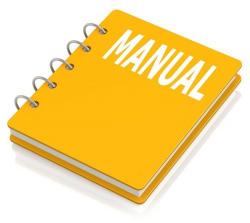Citroen C3/C4/C5/AX/BX/CX/ZX/GS/GSA/Berlingo/Partner/LNA/Saxo/Xantia Factory Service & Shop Manual
Catalog:
Model:
Complete workshop & service manual with electrical wiring diagrams for Citroen C3, C4, C5, AX, BX, CX, ZX, GS, GSA, Berlingo, Partner, LNA, Saxo, Xantia. It's the same service manual used by dealers that guaranteed to be fully functional and intact without any missing page.
This Citroen C3/C4/C5/AX/BX/CX/ZX/GS/GSA/Berlingo/Partner/LNA/Saxo/Xantia service & repair manual (including maintenance, overhaul, disassembling & assembling, adjustment, tune-up, operation, inspecting, diagnostic & troubleshooting…) is divided into different sections. Each section covers a specific component or system with detailed illustrations. A table of contents is placed at the beginning of each section. Pages are easily found by category, and each page is expandable for great detail. The printer-ready PDF documents work like a charm on all kinds of devices.
FILELIST:
C3 (FR)
C5 (FR)
CX_bonus_material
ZX (FR)
2CV 1957 (FR).pdf
2CV4-2CV6 (1970-fin) (FR).pdf
AX '87-'97 (EN).PDF
AX (Essence et Diesel) '87-'97 (FR).PDF
Berlingo, Partner '96-'05.PDF
BX (FR).pdf
BX Hatchback & Estate '82-'94.pdf
C4 1.6 HDi 1.6i 16V (FR).pdf
C5 (EN).pdf
Citroen Berlingo Peugeot Partner Repair Manual 2002-2008 (FR).pdf
Citroen Diesel Engines Service & Repair Manual.pdf
Citroen LNA Service Manual 1979 (FR).pdf
Citroen Saxo 1999- (FR).pdf
CX Microfiches (10-1990 Ed.).pdf
CX Original Parts 1975-1986.pdf
CX Original Parts 1985-1990.pdf
CX Parts Catalogue 1981-1985.pdf
CX Reflex_Athena ab 1979 (DE).pdf
CX Repair Manual (1975 Ed.).pdf
CX Repair Manual (1988 Ed.).pdf
CX Werkstattbuch (DE).pdf
DS21 injection (Salon 70) (FR).pdf
GS_GSA '71-'85.pdf
Xantia '93-'98.PDF
Xantia V6 moteur ES9J4 (FR).pdf
XM Phase II Part Catalog 1994-.pdf
Xsara (R to W Registration) Petrol & Diesel '97-'00.PDF
Xsara Picasso '00-'02.djvu
Xsara Picasso '00-'02.pdf
ZX (H to M Registration) Petrol '91-'94.pdf
AX_bonus_material
...
EXCERPT:
1 General information
The clutch consists of a friction disc, a pressure plate assembly, a release bearing and release fork; all of these components are contained in the large cast-aluminium alloy bell-housing, sandwiched between the engine and the transmission. The release mechanism is hydraulic on right-hand drive models utilizing a master and slave cylinder, and mechanical on left-hand drive models, by means of a self-adjusting cable.
The friction disc is fitted between the engine flywheel and the clutch pressure plate, and is allowed to slide on the transmission input shaft splines.
The pressure plate assembly is bolted to the engine flywheel. When the engine is running, drive is transmitted from the crankshaft, via the flywheel, to the friction disc (these components being clamped securely together by the pressure plate assembly) and from the friction disc to the transmission input shaft.
To interrupt the drive, the spring pressure must be relaxed. This is done by means of the clutch release bearing, fitted concentrically around the transmission input shaft. The bearing is pushed onto the pressure plate assembly by means of the release fork actuated by the cable or clutch slave cylinder pushrod.
On models with a hydraulic clutch, the clutch pedal is connected to the clutch master cylinder by a short pushrod. The master cylinder is mounted on the engine side of the bulkhead in front of the driver and receives its hydraulic fluid supply from the brake master cylinder reservoir. Depressing the clutch pedal moves the piston in the master cylinder forwards, so forcing hydraulic fluid through the clutch hydraulic pipe to the slave cylinder. The piston in the slave cylinder moves forward on the entry of the fluid and actuates the clutch release fork by means of a short pushrod. The release fork pivots on its mounting stud, and the other end of the fork then presses the release bearing against the pressure plate spring fingers. This causes the springs to deform and releases the clamping force on the pressure plate.
Where a cable-operated clutch is fitted, at the transmission end the outer cable is retained by a fixed mounting bracket, and the inner cable is attached to the release fork.
Depressing the clutch pedal pulls the inner cable, allowing the release fork to pivot on its mounting stud and operate the release bearing in the same way as described for the hydraulic version.
On all models the clutch operating mechanism is self-adjusting, and no manual adjustment is required.
2 Clutch hydraulic system - bleeding





